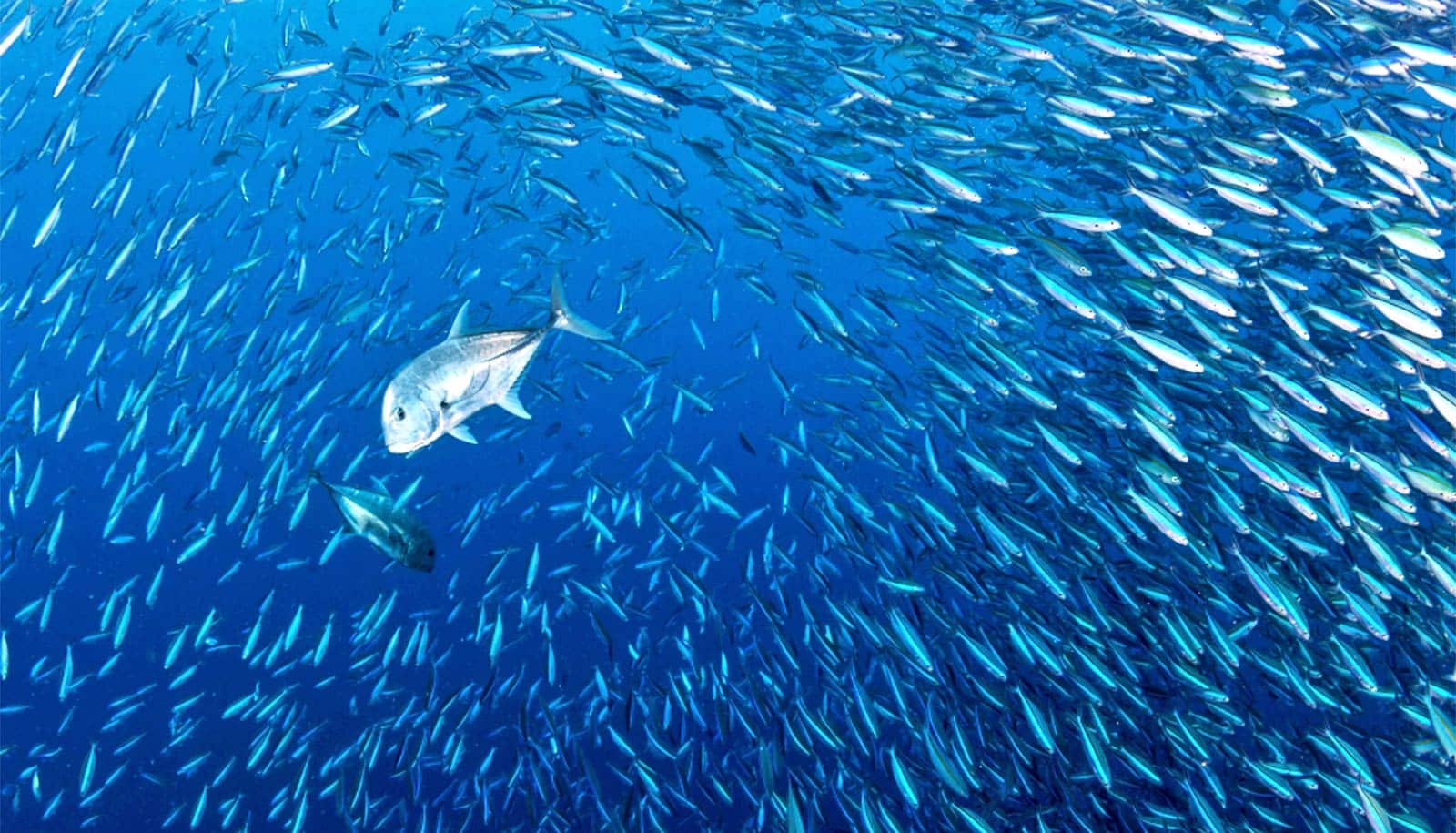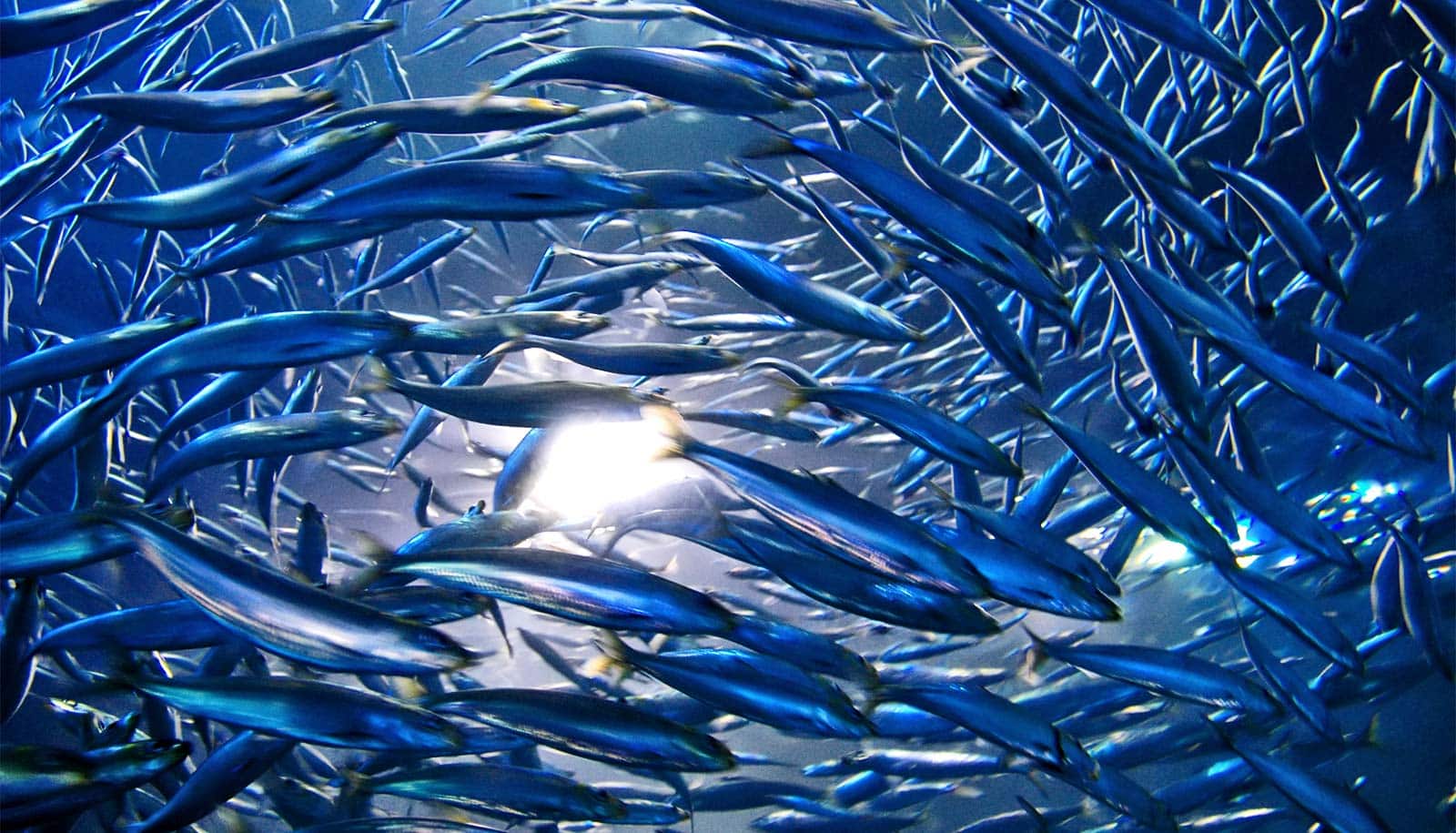A new study is the first to map ocean areas that, if strongly protected, would help solve climate, food, and biodiversity crises.
The new paper is the most comprehensive assessment to date of where strict ocean protection can contribute to a more abundant supply of healthy seafood and provide a cheap, natural solution to address climate change, in addition to protecting embattled species and habitats.
As reported in Nature, researchers identified specific areas of the ocean that could provide multiple benefits if protected. Safeguarding these regions would protect nearly 80% of marine species, increase fishing catches by more than 8 million metric tons, and prevent the release of more than one billion tons of carbon dioxide by protecting the seafloor from bottom trawling, a widespread yet destructive fishing practice.
Blueprint to protect nature
The study is also the first to quantify the potential release of CO2 into the ocean from trawling. It finds that trawling pumps hundreds of millions of tons of CO2 into the ocean every year.
“Ocean life has been declining worldwide because of overfishing, habitat destruction, and climate change. Yet only 7% of the ocean is currently under some kind of protection,” says lead author Enric Sala, an explorer in residence at the National Geographic Society.
“In this study, we’ve pioneered a new way to identify the places that—if protected—will boost food production and safeguard marine life, all while reducing carbon emissions,” Sala says. “It’s clear that humanity and the economy will benefit from a healthier ocean. And we can realize those benefits quickly if countries work together to protect at least 30% of the ocean by 2030.”
To identify the priority areas, researchers analyzed the world’s unprotected ocean waters, focusing on the degree to which they are threatened by human activities that can be reduced by marine protected areas (for example, overfishing and habitat destruction).
They then developed an algorithm to identify where protections would deliver the greatest benefits across the three complementary goals of biodiversity protection, seafood production, and climate mitigation. They mapped these locations to create a practical “blueprint” that governments can use as they implement their commitments to protect nature.
“While we consider three key benefits that marine protection is known to confer, this is really just the beginning,” says coauthor Darcy Bradley, co-director of the Ocean and Fisheries Program at the University of California, Santa Barbara’s Environmental Market Solutions Lab (emLab).
“Our approach is a way to bring multiple stakeholders to the table, to show that their interests can be prioritized, and ultimately to demonstrate that solutions that protect large ocean areas and benefit multiple simultaneous objectives exist.”
’30×30′ target
The study does not provide a single map for ocean conservation, but offers a first-in-kind framework for countries to decide which areas to protect depending on their national priorities. However, the analysis supports the claim that 30% is the minimum amount of ocean that the world must protect in order to provide multiple benefits to humanity.
“There is no single best solution to save marine life and obtain these other benefits. The solution depends on what society—or a given country—cares about, and our study provides a new way to integrate these preferences and find effective conservation strategies,” says coauthor Juan Mayorga, a marine scientist at emLab as well as National Geographic Society’s Pristine Seas.
The study comes ahead of the 15th Conference of the Parties to the United Nations Convention on Biological Diversity, which will gather in May in Kunming, China. The meeting will bring together representatives of 190 countries to finalize an agreement to end the world’s biodiversity crisis.
The goal of protecting 30% of the planet’s land and ocean by 2030 (the “30×30” target) is expected to be a pillar of the treaty. The report follows commitments by the United States, the United Kingdom, Canada, the European Commission, and others to achieve this target on national and global scales.
“Solutions with multiple benefits are attractive to people and leaders alike,” says coauthor Jane Lubchenco, a professor at Oregon State University. “Our pioneering approach allows them to pinpoint the places that, if protected, will contribute significantly to three big problems at once: food security, climate change, and biodiversity loss. Our breakthrough in methodology can bring multiple benefits to nature and people.”
4 protected ocean areas
The report identifies highly diverse marine areas in which species and ecosystems face the greatest threats from human activities. Establishing marine protected areas with strict regulations in those places would safeguard more than 80% of the ranges of endangered species, up from a current coverage of less than 2%. The authors found that priority locations lie throughout the ocean, with the vast majority of them contained within the 200-mile Exclusive Economic Zones (EEZs) of coastal nations.
Additional protection targets are located in the high seas—which international law governs. These include the Mid-Atlantic Ridge (a massive underwater mountain range); the Mascarene Plateau in the Indian Ocean; the Nazca Ridge off the west coast of South America; and the Southwest Indian Ridge, between Africa and Antarctica.
“Perhaps the most impressive and encouraging result is the enormous gain we can obtain for biodiversity conservation with only 21% of the ocean being protected, if we carefully chose the location of strictly protected marine areas,” says coauthor David Mouillot, a professor at the Université de Montpellier in France. “One notable priority for conservation is Antarctica, which currently has little protection, but is projected to host many vulnerable species in a near future due to climate change.”
Banning fishing could boost fish production
The study finds that wisely placed marine protected areas (MPAs) that ban fishing would actually boost the production of fish at a time when supplies of wild-caught fish are dwindling and demand is rising. In doing so, the study refutes a long-held view that ocean protection harms fisheries. Instead, it opens up new opportunities to revive the industry just as it is suffering from a recession due to overfishing and the impacts of global warming.
“Some argue that closing areas to fishing hurts fishing interests. But the worst enemy of successful fisheries is overfishing, not protected areas,” lead author Sala says. The study finds that protecting the right places could increase the catch of seafood by over 8 million metric tons relative to business as usual.
“It’s simple: When overfishing and other damaging activities cease, marine life bounces back,” says coauthor Reniel Cabral, an assistant researcher at the University of California, Santa Barbara’s Marine Science Institute and in its Bren School of Environmental Science & Management.
“After protections are put in place, the diversity and abundance of marine life increase over time, with measurable recovery within reserves occurring in as little as three years. Target species and large predators come back, and entire ecosystems are restored within MPAs. With time, the ocean can heal itself and again provide services to humankind.”
Trawling and carbon
The study is also the first to calculate the climate impacts of bottom trawling, a damaging fishing method used worldwide in which boats drag heavy nets across the ocean floor. The researchers found that the amount of CO2 released into the ocean from this practice is larger than most countries’ annual carbon emissions, larger even than emissions from global aviation.
“The ocean floor is the world’s largest carbon storehouse. If we’re to succeed in stopping global warming, we must leave the carbon-rich seabed undisturbed,” says coauthor Trisha Atwood of Utah State University. “Yet every day, we are trawling the seafloor, depleting its biodiversity and mobilizing millennia-old carbon and thus exacerbating climate change. Our findings about the climate impacts of bottom trawling will make the activities on the ocean’s seabed hard to ignore in climate plans going forward.”
The study finds that countries with large national waters and large industrial bottom trawl fisheries have the highest potential to contribute to climate change mitigation via protection of carbon stocks. The authors estimate that protecting only 4% of the ocean—mostly within national waters—would eliminate 90% of the present risk of carbon disturbance due to bottom trawling.
Closing a knowledge gap
The study’s range of findings helps to close a gap in our knowledge about the impacts of ocean conservation, which to date had been understudied relative to land-based conservation.
“The ocean covers 70% of the Earth; yet, until now, its importance for solving the challenges of our time has been overlooked,” says coauthor Boris Worm, research professor at Dalhousie University in Halifax, Nova Scotia. “Smart ocean protection will help to provide cheap natural climate solutions, make seafood more abundant, and safeguard imperiled marine species—all at the same time.
“The benefits are clear. If we want to solve the three most pressing challenges of our century—biodiversity loss, climate change, and food shortages—we must protect our ocean.”
Source: UC Santa Barbara



